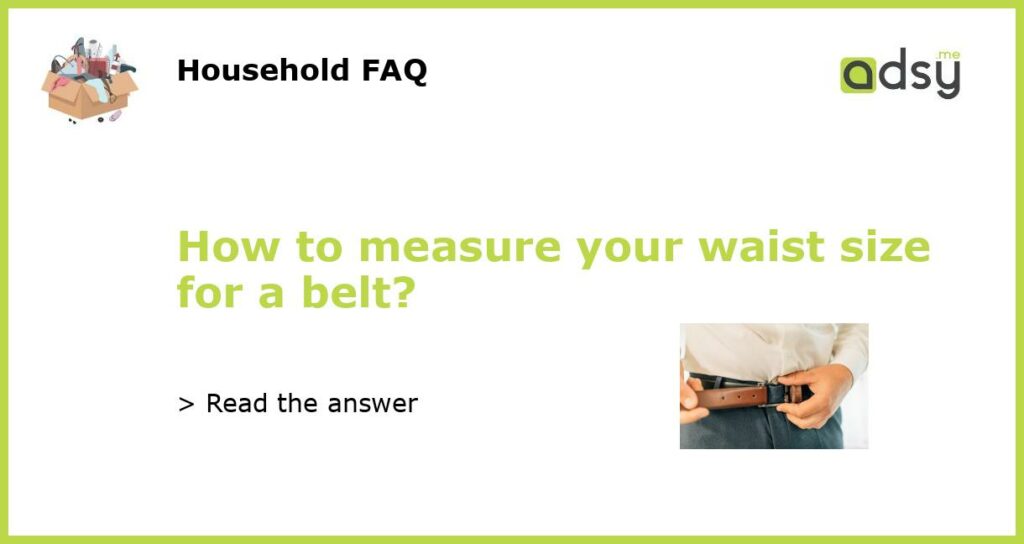Why is it important to measure your waist size for a belt?
Before we dive into the specifics of how to measure your waist size for a belt, let’s first discuss why it’s important to do so. Ensuring that you have the correct measurement is crucial for several reasons:
- A proper-fitting belt not only looks more aesthetically pleasing but also conveys a sense of style and attention to detail.
- Wearing a belt that is too tight or too loose can be uncomfortable and may even lead to health issues, such as pain or restricted movement.
- Knowing your exact waist size allows you to shop for belts more effectively, ensuring that you choose the right size and avoid unnecessary returns or exchanges.
What you’ll need for measuring your waist size
Before starting the measurement process, gather the following items:
- A cloth tape measure or a flexible measuring tape
- A mirror, if you prefer to measure yourself
- A belt, if you already have one and want to double-check its size
The step-by-step process of measuring your waist size
Now that you have everything you need, follow these steps to accurately measure your waist size for a belt:
- Find your natural waistline: Locate the narrowest part of your torso, usually just above your belly button.
- Position the tape measure: Hold one end of the tape measure against your belly button or the point where you want your belt to sit. Wrap the tape measure around your waist, ensuring it is level and straight.
- Take the measurement: Pull the tape measure snugly, but not too tight, around your waist. Ensure that it is straight and parallel to the floor.
- Read the measurement: Look at the measurement where the zero end of the tape measure meets the other end.
- Double-check the measurement: If you have a belt that fits you well, compare the measurement you obtained to the size indicated on the belt. This will help you determine if your measurement is accurate.
Tips for accurate waist measurements
Here are some additional tips to ensure you obtain the most accurate waist measurement:
- Stand straight: Maintain good posture while taking the measurement, as slouching or leaning can lead to an incorrect measurement.
- Avoid pulling too tight or too loose: The tape measure should be snug against your waist, but not overly tight or loose. Pulling too tight can result in an inaccurate measurement, while pulling too loosely may lead to a belt that does not fit properly.
- Measure multiple times: To ensure accuracy, measure your waist at least two to three times. If there are discrepancies between the measurements, take the average to obtain your final waist size.
- Consider your clothing: If you usually tuck your shirts in or wear layers, measure your waist while wearing those items to ensure your belt will fit comfortably over them.
What to do if your waist measurement falls between belt sizes?
If your waist measurement falls between two belt sizes, it is generally recommended to opt for the larger size. This allows for adjustments and ensures a more comfortable fit. Most belts have extra holes to accommodate slight variations in waist size.
However, if you prefer a precise fit without any excess belt length, some manufacturers offer custom-made belts or belts with more closely spaced holes. These options can be worth considering if you consistently find yourself between belt sizes.
Remember, measuring your waist size accurately is the first step towards finding a belt that fits well and enhances your overall look. Take the time to measure properly, and you’ll enjoy the comfort and style that a well-fitted belt can bring.






